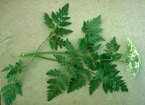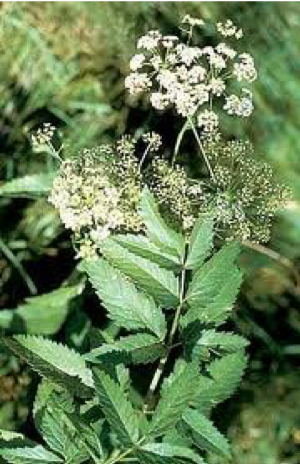Equine Medical Center
Toxic Plants of Kansas
CARDIOVASCULAR SYSTEM |
|
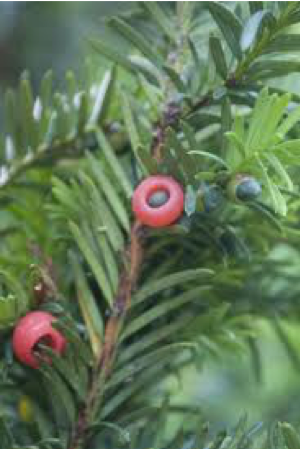 |
Japanese Yew (Taxus spp.) Range: Throughout US. Common ornamental bush/tree. Toxin: Taxine – respiratory and cardiac collapse. Toxin found in all parts of plant, even dried leaves. Susceptibility: Extremely toxic to horses. One mouthful can be lethal in minutes. Signs: Sudden death is common. May see tremors, colic, difficulty breathing, slow heart rate. |
BLOOD |
|
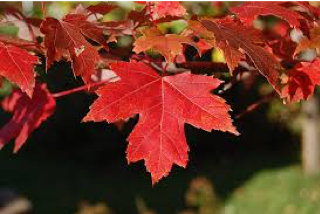 |
Red Maple (Acer rubrum) Range: Throughout US Toxin: Unidentified – oxidant that breaks down red blood cells. Wilted and fallen leaves are most toxic. Susceptibility: Only horses are affected – 1.5 lb. of leaves is toxic, 3 lb. is lethal. Signs: Lethargy, off feed, dark red-brown urine, increased heart/respiratory rates. |
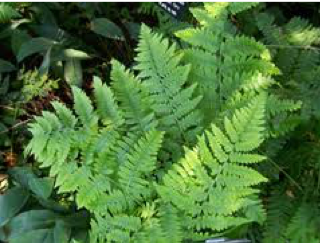 |
Bracken Fern (Pteridium aquilinum) AKA: Eagle fern Range: Coast to coast, except for desert Southwest, often found in landscaping, gardens. Toxin: Thiaminase, which prevents absorption of vitamin B1 which is necessary for the maintenance of nerves. Susceptibility: Horses need to consume 20-25% of diet for several weeks. Signs: Blindness, incoordination, weakness, depression, weight loss, jaundice. |
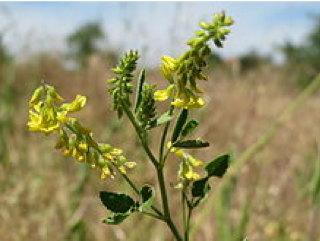 |
Yellow Sweet Clover (Melilotus officinalis) AKA: yellow or ribbed melilot Range: Throughout the United States Toxin: Coumarin that converts to dicoumarol, which is a powerful anticoagulant toxin, when the plant becomes moldy Signs: This can lead to bleeding diseases (internal hemorrhaging) and death in cattle |
CYANIDE PLANTS |
|
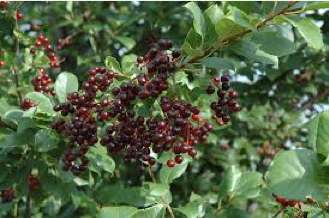 |
Western Choke Cherry (Prunus virginiana) AKA: bitter berry, bird cherry Range: Kansas and North Toxin: Contains cyanide. All parts of the plant are toxic, high concentration in leaves as they wilt. Susceptibility: About 10–20 lbs of foliage can be fatal. Signs: Excitability, muscle tremors, excessive drooling, convulsions. |
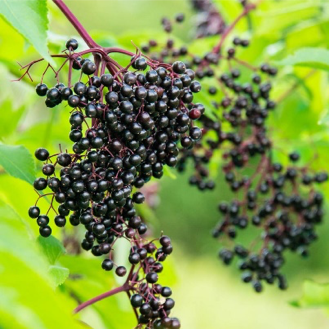 |
Elderberry (Sambucus) Range: Throughout the United States Toxin: Cyanogenic glycoside in the stem and leaves. Susceptibility: Only during drought conditions, unpalatable. Signs: Gastrointestinal upset, diarrhea, coma |
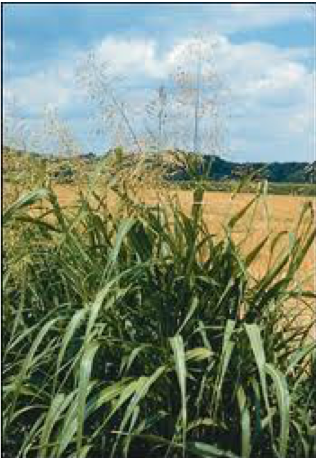 |
Sudan Grass (Sorghum sudanensis) AKA Johnson Grass Range: Primarily the southern half of the US. Nontoxic hybrids are grown as forage crops. Toxin: Cyanide compounds in leaves and stems which inhibit transport of oxygen. Young shoots are highest in toxin. Nitrates also can accumulate in this grass. Susceptibility: Horses less susceptible but can develop neuropathy signs affecting the back half of the body after weeks to months of eating fresh or baled. Signs: Ataxia and incoordination of hind limbs, difficulty backing, dribbling urine, fetal damage. Bladder and kidney infections are common. Damage is irreversible. |
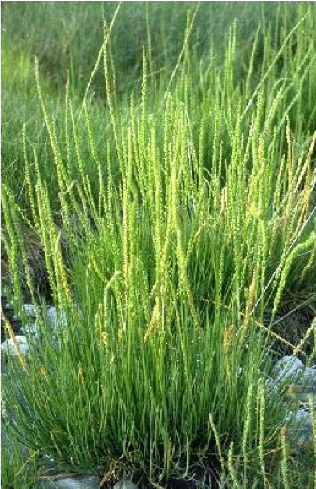 |
Arrow Grass (Triglochin maritima and T. palustris)
Range: Species of arrow grass are widely distributed in marshy areas and wet meadows throughout the United States. Toxin: Contains cyanide. Susceptibility: There is enough hydrogen cyanide, also known as hydrocyanic acid or prussic acid, found in 1/4 to 3 lb of stunted arrow grass to kill a 600-lb animal. Signs: Sudden death may be the only presenting sign. A rapid heart rate, red mucous membranes, and cherry-red venous blood, labored breathing, anxious and excited because they are unable to breath. |
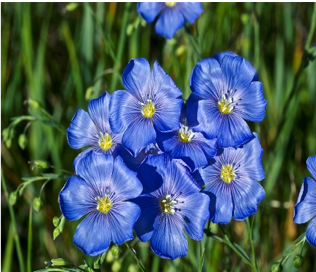 |
Wild Blue Flax (Linum perenne)
Range: Throughout North America Toxin: Cyanogenic glycoside linamarin. Blue flax may also accumulate nitrates Susceptibility: Signs: Severe respiratory difficulty followed shortly by death. Sudden death. Initially animals show difficulty in breathing. Open mouth breathing is common as they animal becomes oxygen deprived. Excessive salivation, nervousness and weakness near death. Mucous membranes appear pink and redder than normal. Venous blood is cherry red in color. Stressing the animal rapidly leads to collapse and death. |
DIGESTIVE SYSTEM |
|
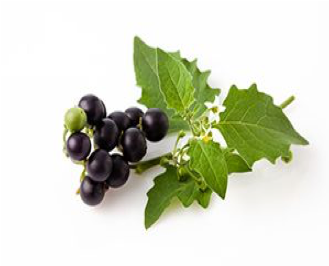 |
Black Nightshade- (Solanaceae atropa belladonna) AKA Poison Berry Range: Throughout the United States Toxin: Contains a glycoalkaloid called solanine. Can be fatal. Stems, leaves and unripe berries Susceptibility: varies depending on the plant part, season, maturity of plant, and other environmental conditions. Signs: Colic, Stomach pain, dumbness, dilation of pupils, lack of appetite, diarrhea, lack of coordination, hemorrhagic gastroenteritis, weakness, difficulty breathing, drooling, unconsciousness, death. Tip: In the tomato and potato family. Don’t ever feed leaves from your garden. |
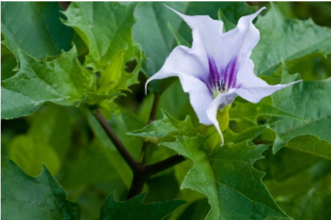 |
Jimson Weed- (Datura) AKA Devil’s Trumpet, Downy Thorn Apple Range: Throughout the United States Toxin: Contain alkaloids which can be fatal. Whole plant is toxic, highest concentration in the seeds and flowers. Susceptibility: Only during drought conditions, unpalatable. Signs: Occur 30-60 minutes after ingestion and include gastrointestinal upset, intense thirst, dry mucous membranes, difficulty swallowing, photosensitivity, confusion and agitation, seizures, coma, death. |
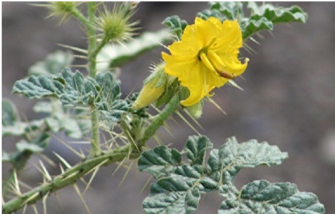 |
Buffalo Bur- (Solanum rostratum) Range: Throughout the United States Toxin: Contains a glycoalkaloid called solanine which irritate the digestive tract, and the central nervous system. Stems, leaves and unripe berries are toxic. Signs: dilation of pupils, stomach pain, lack of appetite, lack of coordination, diarrhea, weakness, difficulty breathing, hemorrhagic gastroenteritis, drooling, unconsciousness, death. |
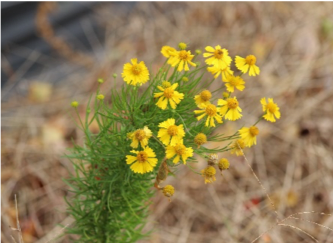 |
Bitter Sneezeweed- (Hymenoxys odorata) Range: Throughout the United States Toxin: All parts of the plant are toxic. Only during drought conditions, unpalatable. However, animals without other viable food sources can develop a taste Signs: irritates nose, eyes, and GI Lack of appetite, depression, arched back stance, bloating, green nasal discharge, weight loss. |
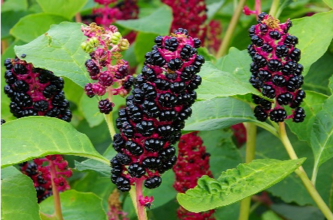 |
Pokeweed- (Phytolacca Americana) Range: Midwest Toxin: Contains a phytolaccotoxin alkaloid which can be fatal. The entire plant is toxic, concentration of toxins in the roots. Signs: colic/diarrhea Burning of the mouth, stomach pain, bloody diarrhea, gastrointestinal upset, colic, birth defects, tumors. |
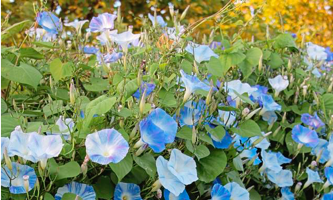 |
Morning Glory - (Ipomoea spp.) Range: Landscaping Toxin: lysergic alkaloids Signs: Dilated pupils, diarrhea, agitation, disorientation, incoordination, nausea, appetite loss, gastrointestinal upset, lethargy, tremors, liver failure |
KIDNEY SYSTEM |
|
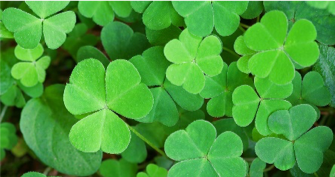 |
Shamrock (Oxalis spp.) AKA Good Luck Plant, Sorrel Range: Throughout the US Toxin: Soluble calcium oxalates Signs: Appetite loss, excessive drooling, diarrhea, abdominal pain, weakness, irregular heart rate, shivering or shaking, respiratory distress, dark brown or red urine, hemorrhaging, kidney failure, convulsions, coma, death. |
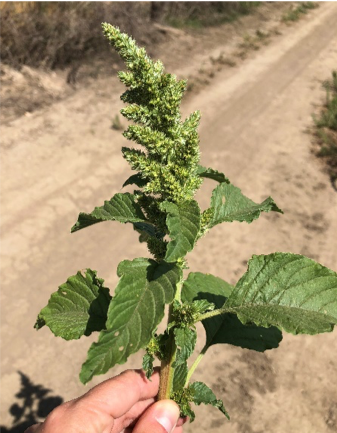 |
Pigweed (Amaranthus retroflexus) Range: Native to the Southern half of the United States Toxin: Contains oxalates and nitrates which increase potassium levels, and cause kidney failure. Can be fatal. Leaves and stems are toxic Signs: Tremors, lack of coordination, abortion of fetus in pregnant mares, knuckling of fetlock joints, coma, death. |
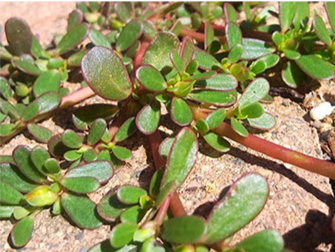 |
Purslane (Portulacaceae) Range: Throughout the United States Toxin: Oxalates Signs: Muscle tremors, weakness leading to collapse, difficulty in breathing, respiratory problems, diarrhea, depression, loss of body coordination, knuckling of fetlock joints , coma, death. |
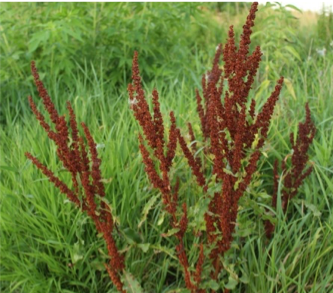 |
Dock (Rumex crispus) Range: Throughout the United States Toxin: Soluble Oxalates Signs: Listlessness, dullness, incoordination, weakness, coma, excess salivation, tremors, recumbency, sudden death. |
NERVOUS SYSTEM |
|
 |
White Snakeroot (Ageratina altissima) White Sanicle, Richweed, Tail Boneset Range: Throughout the United States Toxin: White Snakeroot contains Trematol, a toxin which can be passed on through the milk of nursing mares. Signs: a few minutes to a few weeks after ingestion and can include loss of coordination, weakness, tremors, rapid pulse, jaundice, cardiac arrhythmia’s, profuse sweating, inability to swallow and troubled breathing. |
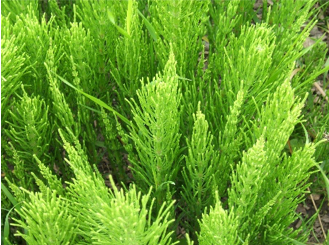 |
Common Horse Tail (Equisetum Species) Scouring Rush Range: Throughout the United States Toxin: Contains Thiaminase that breaks down thiamine, which affects central nervous system and metabolism. Especially dangerous to young horses, can be fatal. All parts of the plant are toxic, fresh or dried. Signs: Jaundice, weight loss, general weakness, lack of coordination, anxiety and paralysis, convulsions and death |
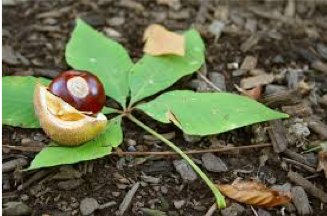 |
Buckeye (Aesculus hippocastanum) AKA: Horse Chestnut Range: Toxin: glycoside aesculin, alkaloids and saponin aescin. Nuts, seedlings, leaves, bark, honey and buds Signs: Uneven gate, excessive diarrhea, seizures, tremors, vomiting, abundant drooling, colic, diarrhea, depression, dilated pupils, lack of coordination, paralysis, inflammation of mucus membranes. |
SKIN/LIVER SYSTEM |
|
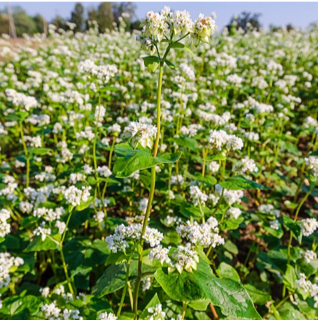 |
Buckwheat (Eriogonum) Range: Toxin: Contains fagopyrin which causes sensitivity to sunlight. Mainly leaves, however other parts of the plant may contain low levels of toxin Susceptibility: Signs: Photosensitivity, abdominal pain, irritation of the mouth and throat, muscle spasms |
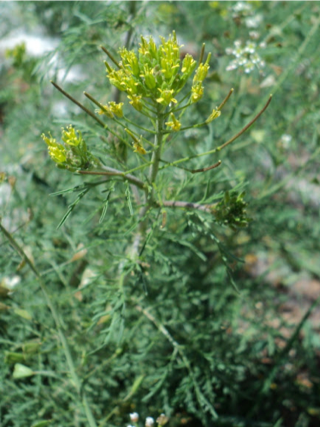 |
Tansy Ragwort (Senecio jacobata) Range: Throughout the United States Toxin: Pyrroliziding alkaloids, cumulative effects on dividing cells, especially in the liver. Susceptibility: 50-150 lb. consumed over time. Signs: Appear when liver damage is already advanced – jaundice, fever, photosensitivity, weight loss, poor appetite, incoordination. |
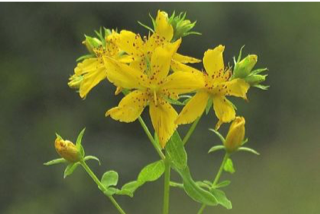 |
St. Johnswort (Hypericum perforatum) Klamathweed, Goatweed Range: a perennial that grows along roadsides and in meadows, pastures, rangelands, and waste places. Toxin: Contains Hypericin which causes a chemically induced sunburn on light colored skin. Can be fatal. All parts of the plants are toxic. Susceptibility: Signs of clinical poisoning usually appear 2 to 21 days after animals begin to have access to St. Johnswort. Signs: Occur within 24 hours of ingestion, inflammation, redness and ulceration of light-colored skin, lack of appetite, severe itching, blindness, convulsions, coma. |
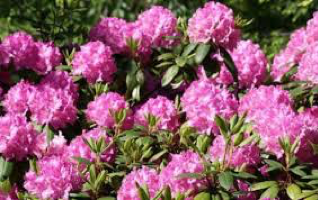 |
Rhododendron Range: Throughout the United States Toxin: cardiac glycosides Susceptibility: Will only eat if pasture is not over grazed Signs: Diarrhea, Hyper-salivation, weakness, coma, loss of appetite, colic leg paralysis, depression, loss of coordination, cardiovascular collapse, seizures, death |
